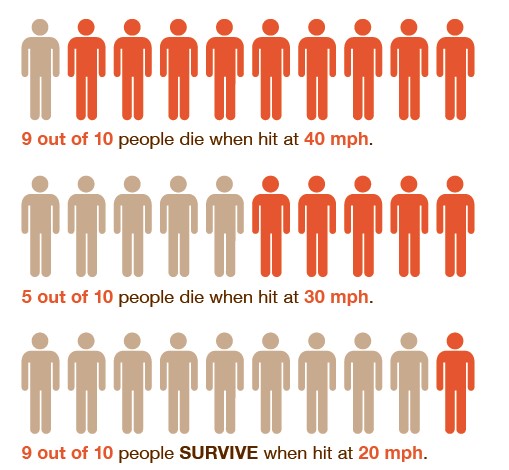Roundabouts are a safer alternative to traditional stop signs or signal-controlled intersections.
Fewer Conflict Points
Traditional intersections have 36 different points at which vehicles can crash into one another, compared to 20 points for a multi-lane roundabout.

The roundabout’s circular design and one-directional traffic flow virtually eliminate the deadliest T-bone and head-on style crashes. Roundabouts also reduce rear-end crashes because traffic must slow down in order to enter.
Not Just for Cities
Roundabouts are proven to reduce fatalities and serious injuries at high-speed, rural intersections. Roundabouts at rural intersections were shown to result in:

Safer for Pedestrians, Too
Slower speeds and one-directional traffic flow mean fewer crossing conflicts. Vehicles and pedestrians also have more time to react to one another.

